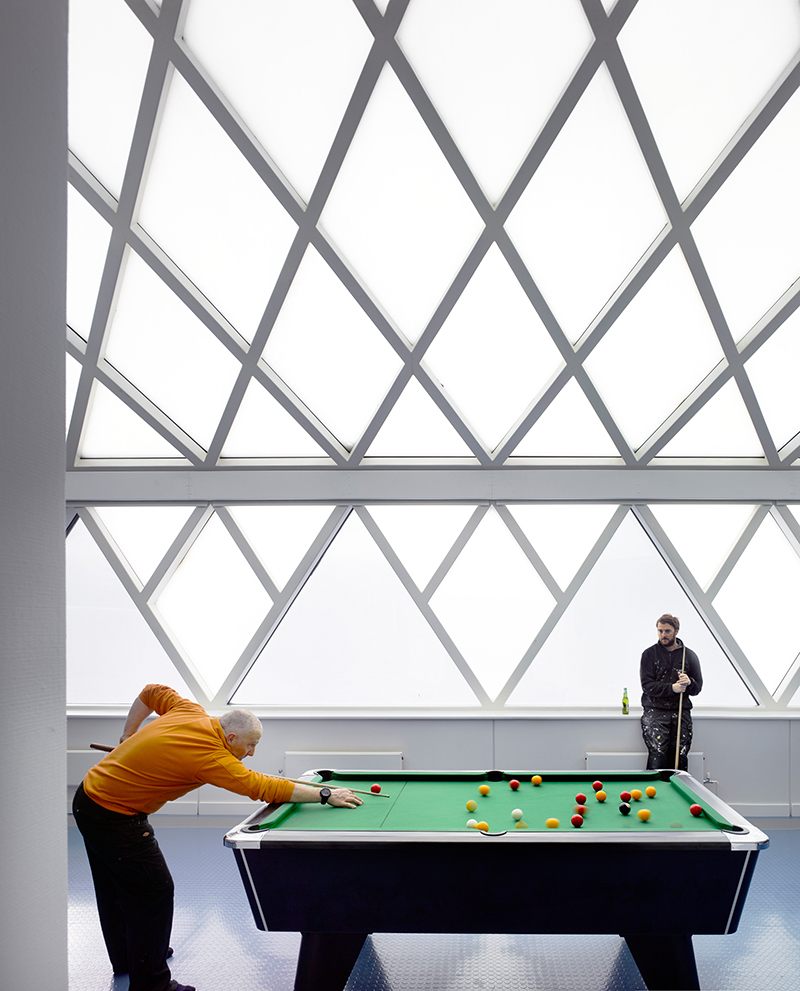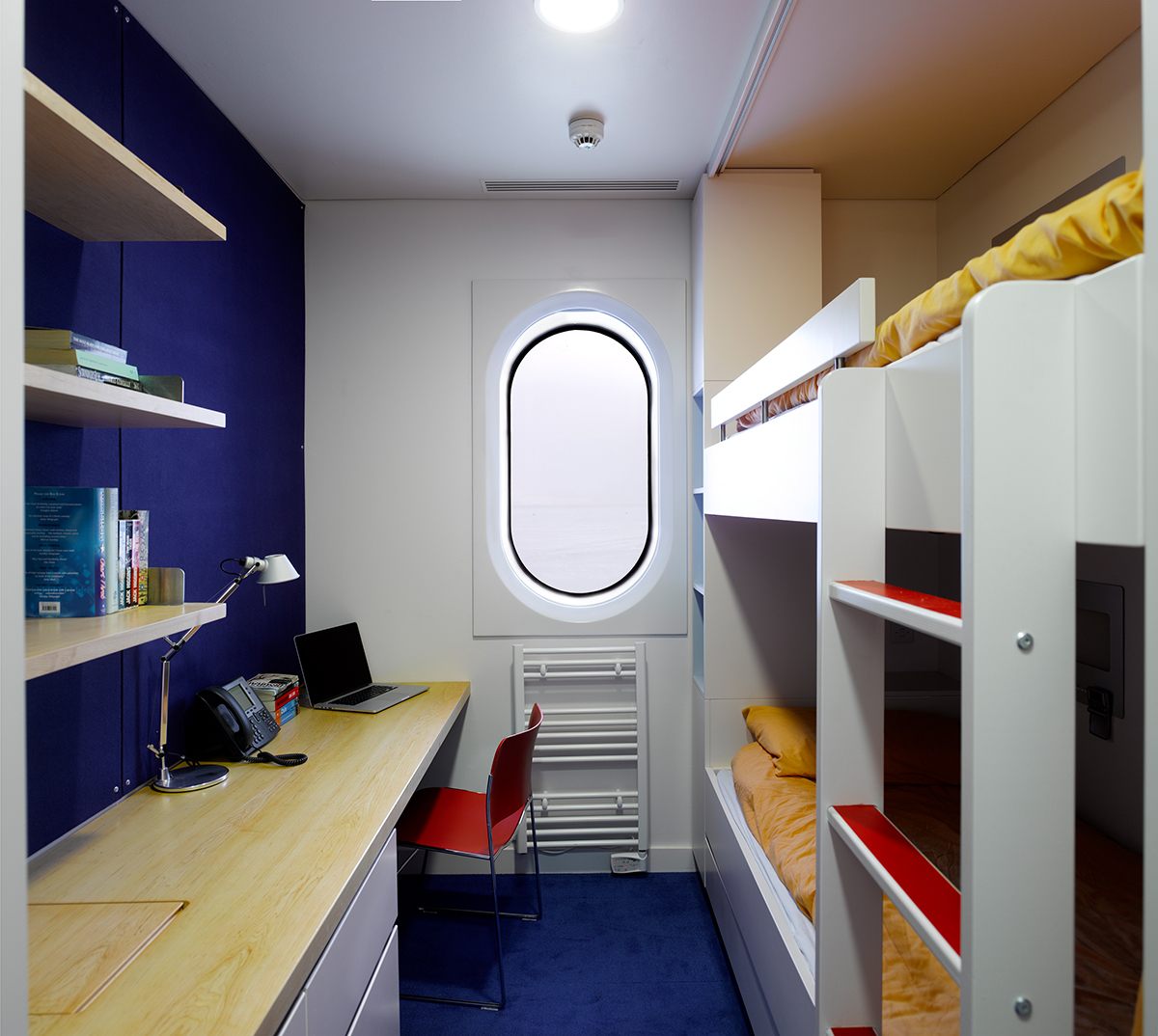Photographs of the Futuristic Antarctic Ice Station That Can Move On Skis
Halley VI with science modules to the left, the red social module in the centre and habitat modules to the right. (Photo: © James Morris)
When it comes to designing a habitat for the British Antarctic Survey’s Halley Research Station, the first thing to consider is the uniquely harsh environment on the 130-meter thick floating Brunt Ice Shelf, in the Weddell Sea. In winter, there is 24 hours of darkness for 105 days. In summer, temperatures rarely rise above freezing. For approximately nine months of the year, no flights or ships can come in or out.
Secondly, there is a long list of past misfortunes to consider: four of the BAS’s six Halley Research Bases bases, in operation since 1956, have been crushed by snow. The fifth, Halley V, was at risk of “calving off” onto an iceberg and floating away. Any new base needs to be habitable year-round, so the BAS can conduct research into the earth’s atmosphere.
Given this inhospitable environment, BAS took a new approach for the sixth base: a design competition. The winning entry, by Hugh Broughton Architects, took four years to build. The components had to be shipped across sea ice, during the three months that the site is accessible. A video shows some of the challenges of the construction process:
Against a permanently white, frozen landscape, the bright red and blue structures are highly visible and boldly futuristic. The patriotically-hued modules each serve a specific purpose: the red module is the communal relaxation area, and the blue modules are for living and working.
The award-winning design has a number of innovative features meant to counter the brutal Antarctic environment. The structure consists of a series of interlinked modules that rest on 13-foot-high hydraulic legs, which can rise in the event of snow build-up. The structures can also be completely relocated: at the base there are giant steel skis, which means the modules can be lowered and towed to a new site. This feature is likely to be employed earlier than expected, in light of recent reports of a growing chasm on the ice shelf.
The modules have been tested by their environment in other ways as well. In the winter of 2014, the station lost power for 19 hours. Normal operations were suspended until the crew managed to restore power, as the temperatures outside were as low as -67 Fahrenheit.
The book, Ice Station: The Creation of Halley VI, Britain’s Pioneering Antarctic Research Station, tells the story of building Halley VI. With photographs by James Morris, the book illustrates the flexible design that enables scientists to inhabit one of the world’s most uninhabitable environments: a floating ice shelf in the South Pole.

Walking along the Bridge link between energy modules. (Photo: © James Morris)

Double-height space at the heart of the social module. (Photo: © James Morris)

Entrance to the science modules at Halley VI, the British Antarctic Survey research base. (Photo: © James Morris)

Bedroom interior. (Photo: © James Morris)

Upper-level climate observatory with 360 ̊ views of the Brunt Ice Shelf. (Photo: © James Morris)

Red double-height social module at the heart of the station. (Photo: © James Morris)










Follow us on Twitter to get the latest on the world's hidden wonders.
Like us on Facebook to get the latest on the world's hidden wonders.
Follow us on Twitter Like us on Facebook